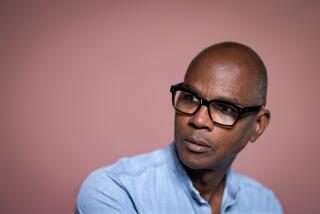‘Grand Old Man of American Sculpture’ : Sculptor Reuben Nakian Dies at Age 89
- Share via
Reuben Nakian, called the “grand old man of American sculpture” whose expressive abstractions generally were built around mythological themes with figurative suggestions, is dead of a heart attack.
He was 89 when he died Thursday at a Stamford, Conn., Hospital.
He had been in poor health for the last few years and generally out of the public eye even longer. Nakian, the son of Armenian immigrants who strongly resembled an American Indian when he was younger, was considered, with Willem de Kooning and Arshile Gorky, a major figure in the American Abstract Expressionist movement.
Collected by Major Museums
His works have been collected by major museums in the United States and around the world and featured at the Los Angeles County Museum of Art in 1962.
His last retrospective was at the Milwaukee Art Museum and followed by nearly 20 years a retrospective at New York’s Museum of Modern Art in 1966 that was at the time considered a landmark of American sculpture.
One of his monumental sculptures, the 15-foot “Garden of the Gods I,” will be installed in the new 20th-Century art wing of the Metropolitan Museum of Art next spring.
Nakian, whose early works were in terra cotta, plaster and burlap stretched across chicken wire dipped in glue and then plastered, first became interested in sculpture in 1912 when he studied briefly at the Arts Students League in New York City.
His formal training came primarily through his work for prominent sculptors. Beginning in 1916, he worked with the influential figurative artist Paul Manship and Manship’s assistant Gaston Lachaise.
Nakian won mass popularity for his life-size likenesses of members of President Franklin D. Roosevelt’s Cabinet, including Cordell Hull and Harry Hopkins, and an eight-foot plaster statue of Babe Ruth. But the statue was never cast in bronze and has since been lost.
Known as Perfectionist
A prolific artist, he was known to gallery owners and other artists as a perfectionist who often destroyed work that dissatisfied him.
In the 1960s he completed several major monumental sculptures that concentrated on long, thin tubular forms.
In the last years of his life, he explored Greek myths, often with erotic overtones, in drawings, small sculptures and etchings on clay urns.
Reviewing a display of his work in West Los Angeles in 1979, Times art writer Suzanne Muchnic found him pursuing “mythological themes of bestiality . . . (where) sexual energy permeates athletic stances . . . (and) eroticism falls in a fantasy world between 18th-Century sweetness and the 20th Century’s equation of physical love with violence.”
Nakian, whose eyesight had failed him in recent years, acknowledged the explicitness of his work, saying: “Sculpture should have a powerful content; (it) should be poetry.”
More to Read
The biggest entertainment stories
Get our big stories about Hollywood, film, television, music, arts, culture and more right in your inbox as soon as they publish.
You may occasionally receive promotional content from the Los Angeles Times.










